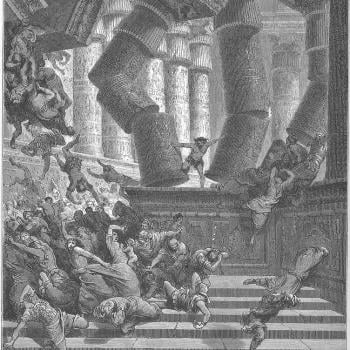Lectionary Reflections
Matthew 11:28-30
July 6, 2014
The African American spiritual goes like this:
Glory glory, hallelujah
Since I lay my burden down
All my sickness will be over
When I lay my burden down
All my sickness will be over
When I lay my burden down
All my troubles will be over
When I lay my burden down
All my troubles will be over
When I lay my burden down
Lord, I'm feeling so much better
Since I lay my burden down
Lord, I'm feeling so much better
Since I lay my burden down
Glory, glory, hallelujah
Since I lay my burden down.
This brief passage from Matthew 11:28-30 is a paradoxical command by Jesus, speaking as the Wisdom of God, to lay down unnecessary burdens, put on the yoke of his teachings and presence, and pull the weight of a life of mercy, justice, and love of God and neighbor.
How did Jesus come to be seen as the Wisdom of God referred to in the Hebrew Scriptures? The New Testament writers mined the writings of the Hebrew Bible and what we call the intertestamental period for images and themes to understand Jesus' identity and mission. Hence Jesus was viewed as the Son of God, the Son of David, the New Moses, and the Suffering Servant. Another important category was Jesus as the Wisdom of God. The identification of Jesus as Divine Wisdom shows up particularly in the Gospels of Matthew and John, but also threads its way through the Pauline epistles. The background of this identification begins in the Book of Proverbs where the character of God's wisdom is personified as a female figure who teaches, who invites passersby onto the path of wisdom, and who is even portrayed in chapter 8 as assisting God in the creation of the world, "rejoicing in God's inhabited world and delighting in the human race" (Pr. 8:31).
Reflection on this figure of Wisdom continued into the period between the testaments in a number of writings. Prominent among them are the Wisdom of Solomon (1st century B.C.E.) and the Wisdom of Jesus Ben Sira (2nd century B.C.E). In both writings, Wisdom becomes more specifically identified with Israel and God's choice and plans for the nation. In the Wisdom of Solomon, Wisdom is connected with the Spirit of God and is said to have guided prophets and sages throughout Israel's history. In chapters 6 and 51 of the Wisdom of Jesus Ben Sira, Wisdom is identified with Torah and is depicted as a yoke that, when taken on, brings rest. These passages most certainly inform Matthew 11:28-30. Jewish reflection on Wisdom continued into the Christian era in books like 1 Enoch (1st century C.E.) and 4 Ezra, also known as 2 Esdras (2nd century C.E.).
The sage who wrote the Wisdom of Jesus Ben Sira 6:19-31 describes the instruction embodied in Torah as a yoke, a wooden crosspiece placed over the necks of a pair of oxen to enable them to pull a load together. He says,
Come to her like one who plows and sows. Put your neck into her collar. Bend your shoulders and carry her...Come unto her with all your soul, and keep her ways with all your might...For at last you will find the rest she gives...Then her fetters will become for you a strong defense, and her collar a glorious robe. Her yoke is a golden ornament... (Sirach 5:16).
When the sage who wrote the Wisdom of Jesus Ben Sira wrote the words in this passage, he was inviting disciples to come and study with him, but he pointed them to the yoke of Torah, which he identified with Wisdom. The yoke of Torah consisted of its clear teachings on one's religious obligations and responsibilities. Jesus spoke as Wisdom Personified. His yoke was a relationship with him that bound his disciples to him personally and enabled them to live by his teachings about mercy, justice, and love. (Witherington, 360)
Jesus may have been talking about the burden of Pharisaical and scribal halakah, the 613 mitzvot, laws, good deeds, or obligations that are the legacy of Torah, rabbinic teaching, and custom. However, New Testament scholar Douglas Hare points out that "The rest referred to in this passage is not the rest of inactivity. Jesus did not come to abolish the law of Moses but to fulfill it by providing its ultimate interpretation (Matthew 5:17)." The rest he refers to in this passage is not a vacation from the law, but a less burdensome way of fulfilling it. He simplified the observance of the law by his emphasis on its weightier matters: justice, mercy, and faithfulness (23:23) and on the double commandment of love (22:37-40).
Jesus' presence and teachings are the new yoke, the one that makes "rest" possible. (Hare 129) Hare points out that "Jesus' yoke is called easy. The underlying Greek word means 'kind.' A good yoke is one that is carefully shaped so there will be a minimum of chafing. Jesus' yoke will be kind to our shoulders, enabling us to carry the load more easily. In this sense alone his burden will be 'light.' He does not diminish the weight of our accountability to God but helps us to bear this responsibility."





